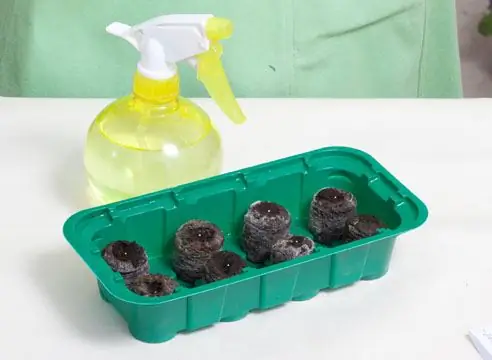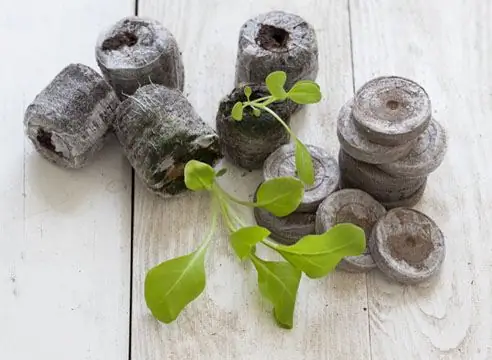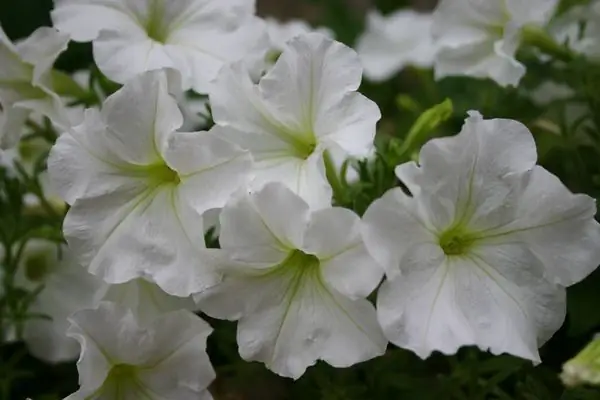Petunia is especially popular among gardeners. These wonderful flowers of abundant varieties and colors can be seen both in city flower beds and in home gardens. However, gardeners know how difficult it is to grow petunias. To increase seed germination and get strong seedlings, they go to various tricks, including using peat tablets.

It is quite difficult to grow petunia in the traditional way at home: it is necessary to provide a certain light regime and the required temperature. It has been empirically proven that the use of peat tablets for the cultivation of these flowers has a beneficial effect on the entire process of plant growth.
Benefits of peat tablets for growing petunias:
- Contain a complex of all the necessary fertilizers;
- Maximize the level of seed germination;
- Eliminate the need to dive seedlings;
- Save money;
- Convenient to use.
Growing petunias
Before the first buds of petunias appear between planting and the development of full-fledged plants, at least three months must pass. It is better to plant seeds in the second half of March, however, if there is a possibility of illumination, then it is possible earlier - at the end of February. And yet, if you do not use additional lighting, then you can grow petunia from March seedlings at the same time as February.
In order for the seedlings to have enough space, peat tablets should be about 3-4 cm in diameter. It is recommended to soak them in water 2 hours before sowing until they swell completely. Water can be topped up if necessary. It is best to discard excess water.
The seeds of petunia are placed in small indentations in tablets using a toothpick, match or a pointed spatula. Often, when using traditional planting methods, growing petunias in seedling boxes turns into a real torture: in some places there are many seeds, while in the other part of the box there are none at all. The use of peat tablets avoids this - only one seed is placed on one tablet.

Some gardeners have difficulty with pelleted seeds, which usually take longer to germinate than normal seeds. These seeds need more moisture to break through the dragee shell. To grow petunia from such seeds, you will have to resort to a little trick: the decomposed seeds should be moistened with water using a spray bottle or dripped onto them from a pipette.
Then, after about 3-5 minutes, using a toothpick, gently smear the soaked dragee shell. The crops are covered. If there is no mini-greenhouse in the house, then the tablets with seeds are covered with a regular lid, with which the food is packed. Place the tray in a warm place. If the temperature in the room is approximately + 25 ° C, then in a week the first shoots will appear. At temperatures below + 20º, it is almost impossible to grow petunia - the seedlings simply will not sprout.
At first, the seedlings are especially vulnerable, therefore, so that they do not stretch, immediately after their appearance, the temperature is reduced to +18 + 20 ° C. It is imperative to ensure that the peat tablets are constantly wet. In the event that they are cracked or settled in the tray, it is necessary to pour water until the tablets swell. Then the excess moisture should be poured out. It is recommended to ventilate petunias regularly.
Before transplanting flowers into pots, it is better not to feed them: peat tablets contain all the necessary fertilizers.
As soon as the roots of the petunia begin to break through the shell of the tablets, you should start transplanting flowers. At the same time, you can avoid the diving of plants from the tablets. Instead, the seedlings are transplanted with the clod. If you stretch with a transplant, this will negatively affect the cultivation of petunias: the resistance of the seedlings will decrease, their growth will stop.

10 days after transplanting the seedlings, you can start hardening it. To do this, during the daytime, it is placed on a glazed balcony, in a greenhouse or veranda. It is impossible not to protect young seedlings from drafts, direct sunlight and cold winds.
Water for irrigation when growing petunias
A special influence on the cultivation of petunia is exerted by the water with which its seedlings are watered. At the same time, moderation and timeliness are the key factors here. In addition, you must follow a few simple rules:
1. It is not recommended to water the seedlings with a watering can. Otherwise, they often get sick with "black leg". This disease causes the sprouts to rot and die.
2. It is necessary to maintain a certain soil moisture. To do this, petunia should be watered not from above, but from below from the pallet.
3. The water should be soft and free of chlorine. Before watering, it must be defended for a day. Add a few drops of lemon juice to the water.
Recommendations for growing petunias

Growing petunias can also be carried out in a kind of greenhouses. Such conditions can be easily created by covering the tray with glass, ordinary film or plastic. The containers must be opened every day so that the seedlings breathe fresh air.
- After the seedlings are transplanted into separate pots, the temperature is usually lowered to 3-5º Celsius.
- Seedlings should be taken out to fresh air every day.
- The planted seeds must be highlighted before the first shoots appear.
- For plants to bloom profusely, they should not be left in the pouring rain.
- The top layer of the soil should never dry out.
- If petunias grow in limited containers, for example, in a flowerpot or basket, then you should think about feeding the flowers.
It is possible to grow petunia at home, but you should be patient. These flowers need constant care, especially when it comes to seedlings. Peat tablets greatly simplify the process of breeding petunias, however, in addition to this, a novice gardener should observe a certain water-temperature regime, otherwise the plants will die or the seeds will not hatch at all.






